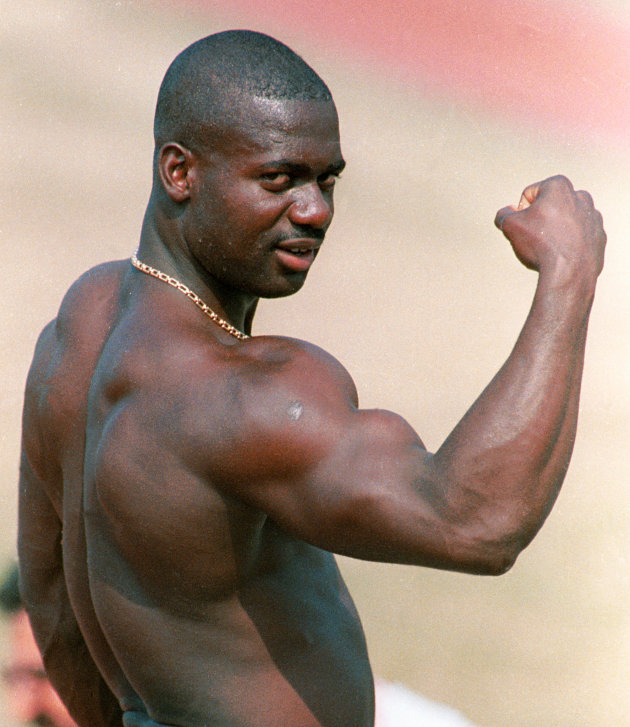There are so many factors that are housed in the vertical jump: Rate of Force Development, Starting Strength, Absolute Limit Strength... and all those other useless science terms you won't see in a day-to-day situation. But the Two that stand out the most are Strength, and Plyometric Strength.
Strength by definition is how much force the muscles are able to output. For example, Athlete A who squats 300lbs has more strength than Athlete B, who can only squat 250lbs. In athletic endeavors, Relative Strength is typically more important than Absolute Limit Strength.
Plyometric Strength refers to that bouncy feeling, being able to utilize the stretching-shortening cycle very efficiently. When you watch the long jumpers, high jumpers, they look very plastic, like a rubber band. Stefan Holmes is a great example for this.
Why can he SVJ so little yet jump so high?
Because he is in an event where plyometric strength dominates.
The standing vertical jump test, like mentioned before, is heavily governed by two major factors, strength and plyometric strength. People who have high verticals ( 40 inches + higher). Generally have a well-balance of strength and that bouncy feeling. But in high jump, strength does not matter as much as plyometric strength.
A more accurate way to measure Stefan Holme's vertical jump would be to get him to land off a box around 26 inches high, and tell him to immediately jump as high as can off the ground. Since this pre-stretches his muscles, we get a more accurate way to measure his vertical.
Here is a video with Bryan Clay, Beijing 2008 Olympics Decathlete Champion, demonstrating a 43 inch vertical. Notice how he does not look nearly as "bouncy" as Stefan. We can say that Bryan has more strength than Plymoetric Strength. And that strength gives him a more explosive look.
Everyone in the industry has witnessed this video and its amazing feat. Stefan is jumping very high hurdles with a normal run-up. Stefan has a very skinny built, which corresponds to an athlete who generally has more plyometric strength, as opposed to Bryan who has a very powerful built. He can jump very high here because he is running.
The more plyometric strength you have, the more significant your running jumps will be when compared to the standing jumps.
The more strength you have, the more significant your standing jumps will be when compared to the running jumps.
If you are training for standing vertical jump (prima donna in athlete measurements), then see which one you are lacking in and work on it harder. This will keep that fair balance and you can ALWAYS improve as long as you have a deficit. But for high jump, athletes with better plyometric strength are going to be the ones with the medals.



7 comments:
Hi! Any questions? I'll be glad to answer them here!
Such a nice information you are giving through this blog which helps to look forward with my dedicated topic. SO thanks for your cooperation with this blog.
How do you debit credits?
Does your vertical jump fall short? Learn how to reach higher and propel forward with these workout tips! best vertical jump program
Stefan Holm scissor jumped 215 cm and he is only 6 feet tall. To do that you need to be able to elevate enough that your tights reach that height without even bending. His has a vertical of at least 52"+. Have respect to the guy. He is an Olympic champion.
One of the biggest mistakes people make is performing a bunch of sets and reps. They spend hours each day doing drills and are dedicated to them. They feel the burning in their legs and calves but get no results. thank you for sharing.. all about jumpers site
Download Bollywood Music
Post a Comment